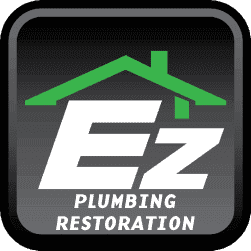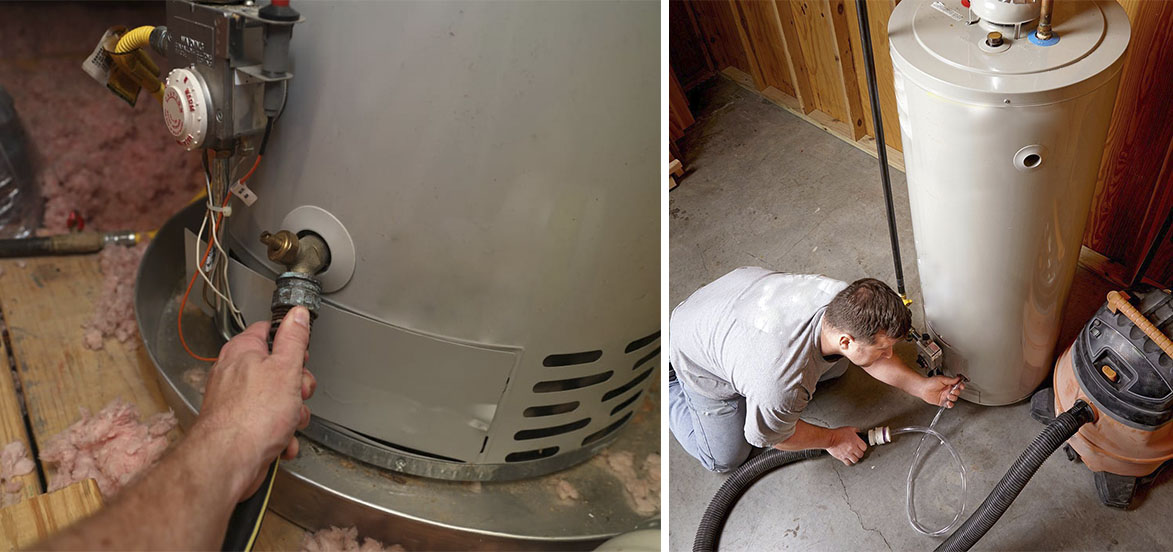4 Simple Ways For Repairing A Clogged Water Heater
When your water heater is not draining or delivering hot water efficiently, your water heater is facing problems related to clogging. Mostly old water heaters in the houses are storage tank types. Clogging in the water heater happens due to irregular flushing or sediments.
In this blog, you will get insights into how to fix a clogged water heater system step by step. If the clogs in a water heater are in severe conditions, call out professional water heater repair services in San Diego. Before we get into professional ways of repairing a clogged water heater, let’s look at the causes of blockage inside the water heater.
Why Does The Water Heater Gets Clogged?
A) Mostly in the clogged water heater cases, it’s the drain valve that becomes the culprit of clogging. The drain valve is a small faucet situated at the bottom of the tank. The prime use of a drain valve is to lubricate the regular flushing maintenance process for flushing operation.
Also, you need a drain valve during the flushing of mineral deposits from the water heater or emptying water from the tank. If you do not clean once or twice a year, then the cases of clogging start to take place in your water heater system.
However, this mainly happens due to the lack of frequent flushing of the water heater at the instructed period.
B) Another big reason for clogged drain valves is the accumulation of minerals like iron, calcium, and limescale as sediments build up within the tank. Excessive sediments can enter the tank through hard waters, mostly in the high contamination areas. Sediments start to occur in the tank when minerals from water get separated and settle at the bottom of the water heater tank due to the water heating process over the periods. They form a coating that stops the transfer of heat from the burner to the water. Also, they reduce the efficiency of the water heater. It causes rust and settling of minerals, which leads to clogging of the water heater.
That’s why you need regular maintenance of the water heater at a suggested time by the manufacturer.
Ways To Ensure Clogging In A Drain Valve Of Water Heater
1. First, switch off the main electric supply power. Turn off the fuel source connection of the water heater.
- For Electric: Turn off the circuit breaker
- For Gas: Turn the control knob off
2. Secondly, attach a garden hose to the drain valve if it is not close to the drain area. Go to the other side of the drain valve and open the valve to drain the tank.
3. Release the pressure valve on the top of the water heater or turn on the hot water faucet to eliminate the negative pressure in the tank and help it to drain easily.
4. Check out the draining process whether it’s clear or not. If not, then your valve is not clogged.
5. If the draining is not happening clearly or not draining at all, this means your valve is clogged.
Before unclogging the water heater, take safety measures first to prevent yourself from any incidents.
Safety Measures To Undertake While Unclogging The Water Heater
- Wear safety goggles to protect your eyes in case hot water spills out. Also, wear gloves to protect your hand.
- Switch off the power supply or disconnect the gas and allow hot water to sit in the tank for 24 hours after shutting the power off.
- Take the whole water out from the tank by opening the drain valve. Also, keep the cold water inlet of the water heater open. This will help to dilute the hot water with cold water. Keep the electric source turned off. This process works when the drain valve is partially clogged.
- If the drain valve is fully clogged, open the hot water faucet of all rooms to drain out hot water from the tank. Open up the cold water inlet valve to dilute with hot water. It will cool down the temperature of the water heater. Keep the fuel power source off.
Also Read: Benefits of Engaging with Best Water Heater Repair Company
Procedures To Unclog A Water Heater Drain Valve
There are multiple ways to unclog your water heater drain valve. Firstly you have to understand the complexity level of the clog. Before you start the process of unclogging, turn off the power and incoming water.
1. Manual Time Taking Process
Partial clogs in geysers clear out by themselves through simple steps. Apply nominal pressure, which will help the clog to drain out from the valve. With the help of water pressure, try to push the debris through an open drain valve.
- Keep the cold water inlet valve that controls the supply of the water tank. Make sure this is the incoming cold water valve, not the valve for outbound hot water.
- Start with Attaching a garden hose to the drain valve at the bottom of the water heater. Run out the other side of the garden hose to the outdoors or somewhere else. Just make sure the end of the valve is below the level of the drain valve.
- The next step is to close all the hot water faucets in your house and then open the drain valve.
- The pressure created by hot water will allow the clog to get out from the pipe and push it through debris. This process takes 3-4 hours to complete the clogging.
2. By Using A Stiff Wire Coat Hanger
The 2nd method is using a stiff wire coat hanger to unclog the water heater. This is a very effective method to unclog your tank for draining water with a small amount of debris present in the tank. This small debris blocks the path of drainage outflow inside the tank.
- Firstly close the drain valve and then disconnect the garden hose. Place a small bucket or a towel below the drain valve to catch the water.
- Open up the drain valve and insert a stiff wire or wire coat hanger through the valve opening into the tank. Now move this stiff wire into a circular motion to remove the debris.
- Water will start to flow through the drain valve if the stiff wire can unclog the drain valve. If it’s not, then keep continuing this process.
- As you start getting a good water flow, turn off the valve. After that, attach a garden hose to finish the tank draining.
- If any clogging takes place again in the valve before your tank fully drains out the water, keep repeating the process until you eliminate it.
3. Stomping Hose Method
If those two didn’t work out to unclog your water tank, you can try the stomp hose method to unclog your drain valve.
- Step firmly on the attached drain hose to the valve and keep the valve open. Stand on the hose 2-3 feet away from the water tank. This will help the water to stomp on the hose.
- Stomping will force an air bubble pressure back into the tank. If the clog is due to sediments, this will clear the clogged tank.
- If the drain valve is clogged again during the draining process, keep repeating the stomping process until full drainage gets completed.
- If the drain doesn’t flow out, settle the clogged valve again.
4. Back-Flush Method (Reverse Flow)
The backflush method is one of the most reliable methods to unclog your drain valve. Use these mentioned steps to perform the reverse flow method.
- Use a two-sided female coupling washer fill hose that has connections on both ends.
- Keep the drain valve off and connect one end of the washer hose thread onto the end of a drain valve. Attach the other end of the washer hose to a garden hose or a washtub faucet.
- Once the washer hose gets attached to the faucet and the drain hose, turn on the water faucet, and this will build pressure into the hose.
- Turn on the water heater drain valve and let the water flow into the tank for 30 seconds.
- The flow of water will push the sediments out from the valve and clear the clog.
- Close the drain valve and turn off the water at the faucet. Disconnect the garden hose from the faucet.
- Lastly, open up the water heater drain valve and drain the tank completely.
- If water still does not drain out properly, you need to change the drain valve.
All these steps mentioned above help to clear out the clog from your water heater tank.
You can try out all these proven methods to fix your clogged drain valve at home with primary safety measures. If these procedures are not working for you, call the professional for water heater repairs in San Diego to fix your tank.


